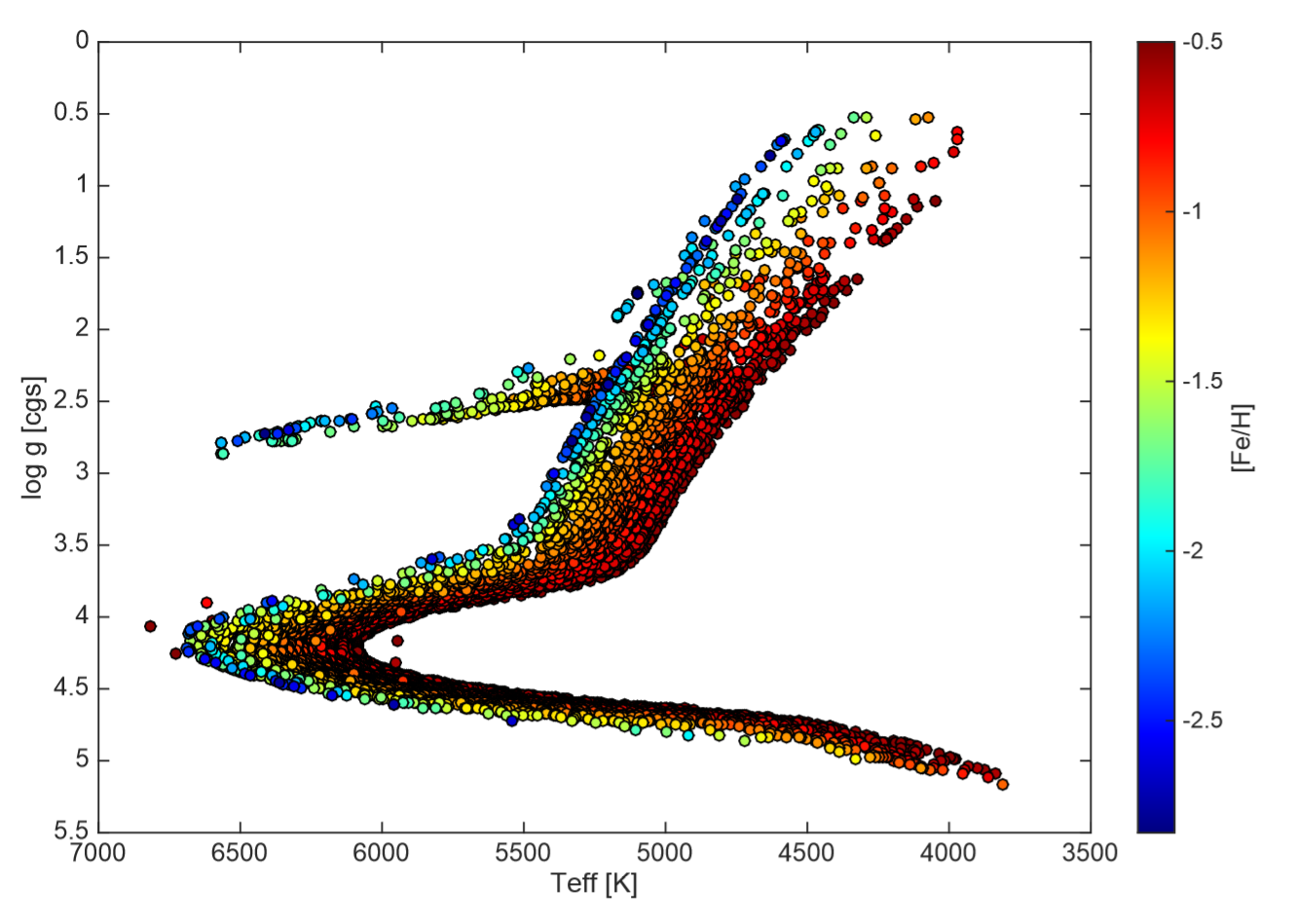Update from the Milky Way Halo High-Resolution Survey
by Anna Arnadottir on 2016-11-30
The Milky Way Halo High-Resolution Survey team has mainly been working on a revision of the mock target catalog, to explore options for increasing the Figure of Merit (FoM) of the survey. The challenges we are facing are the low surface density of halo stars, as well as the limited light collecting power of the VISTA telescope, which results in long exposure times for the targets close to the planned limiting magnitude (i.e., AB = 16) of the survey.

Randomly selected subset of the mock target catalog for the Milky Way Halo High-Resolution survey. It contains stars in all relevant evolutionary stages; i.e., dwarfs, subgiants, giants, as well as horizontal-branch stars.
We have therefore relaxed the selection criteria for the mock target catalog, which now includes not only giants, as foreseen in the original survey proposal, but also subgiants and dwarfs. Furthermore, the metallicity selection has been lifted by 0.5 dex to [Fe/H] < -0.5. The region -1.0 < [Fe/H] < -0.5 is scientifically very interesting, because differences in the overabundances of the a-elements between the inner and outer halo populations can be seen there (Nissen & Schuster 2010, A&A 511, L10). Hence the 4MOST spectra will allow to disentangle these two populations within the observed sample of stars by means of abundances alone; i.e., without using any kinematic information derived from Gaia astrometry.
The new mock target catalog contains about 2.3 million objects. With this target catalog, the FoM of the survey now reaches 0.49 after a simulated 5-year survey. The calculation of this FoM is based on a simple “pass or fail” decision, depending on whether the spectral signal-to-noise ratio we aim at has been reached, or not. However, spectra that barely miss this SNR requirement are still useful for most of our science aims, therefore such spectra should be accounted for in the calculation of the FoM. When we do this, the survey FoM reaches 0.7; i.e., it is considered to be scientifically competitive, since FoM > 0.5.
Another area of ongoing activity is the development of a test version of the Galactic Data Analysis Pipeline under the auspices of Infrastructure Working Group 7. We have been working on preparations for computing an extended grid of synthetic spectra, which will be used in a data-driven approach for determining stellar abundances (i.e., The Cannon; Ness et al. 2015, ApJ 808, 16).